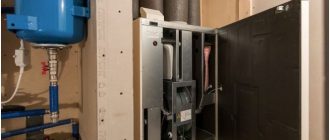Each owner of the dacha sooner or later wonders how to increase the yield of the garden and optimize financial and physical costs. As a rule, it is after this that they begin to consider affordable hotbeds with their own hands: the best projects and features of their implementation. This article will consider the successful construction of greenhouses, materials for construction and coating, as well as a detailed description of the construction of the building.

Do-it-yourself greenhouses: the best projects from various materials
Before proceeding with the construction of a greenhouse, it is necessary to decide on several fundamental aspects that will determine the size, type and location of the structure. First of all, you should think that you plan to grow in it. For example, a greenhouse for tomatoes should be the same height as adult plants, while growing only seedlings does not require a large size structure.
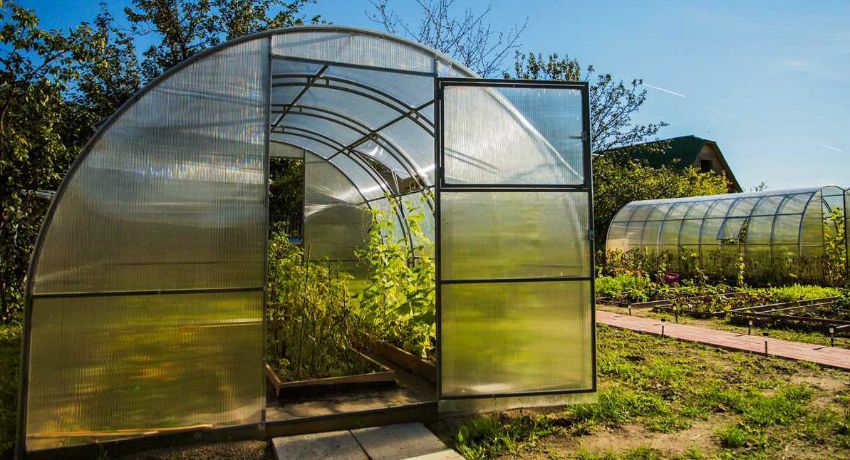
Another important point is the material from which the construction will be carried out. The most popular option that is used in most cases is wood. But today wood has given way to lighter and more affordable modern materials, such as plastic pipes and covering materials. But this does not mean that the wooden frames were abandoned altogether. Wooden and metal greenhouses can still be found quite often.
As for the covering material, then the popularity of the recently appeared novelty, polycarbonate, has gained popularity. After all, according to its characteristics and light transmitting abilities, it is in no way inferior to glass, and at the same time it has less weight and is much simpler to install.
Depending on the shape of the roof, the designs are arched, sloping and gable. Despite the fact that of these three types of gables are most difficult to build, they are the most popular, as they allow the plants to create the best conditions, providing maximum illumination.

Choosing the right location is another task that the site owners have to decide before starting construction. It is at this stage that it becomes noticeable what is the difference between a greenhouse and a greenhouse. First of all, they significantly differ in size and capital construction. More information about how a greenhouse differs from a greenhouse can be found on specialized sites and forums.
Before you finally decide on the territory that you plan to take under construction, you must answer a few questions for yourself:
- at what time of year, and for how long it is planned to use the structure. It is possible that only seedlings are grown in a greenhouse or greenhouse, and the grown plants are transplanted. If the design is used year-round, it is necessary to provide for artificial heating and watering systems;
- illumination of the selected area. It is very important that plants planted in a greenhouse receive enough sunlight. Therefore, it is not recommended to install the structure on a shaded area, under large trees or near the non-solar walls of buildings;
- It is very important to pay attention to the issue of humidity – a highly undesirable high level of groundwater, which can provoke stagnant water in the root system of plants, and as a result – the beginning of the process of decay. In addition, unfavorable areas for the installation of greenhouses and greenhouses are considered places where rain or melt water may accumulate.
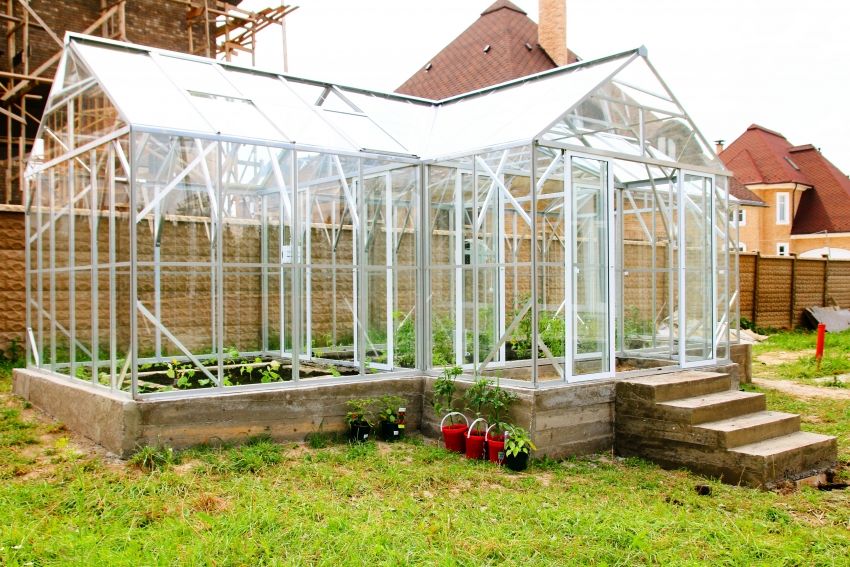
Helpful advice! Have a greenhouse is and taking into account the cardinal points. This approach greatly facilitates the care of plants and has a positive effect on the development of almost all crops. For greenhouses that are operated in the spring – the location is favorable from north to south, and for year-round – from east to west.
Another simple explanation for the fact that the greenhouse or greenhouse must be installed on level ground – especially the movement of warm and cold air. Everyone knows that the molecules of warm air have less weight, and therefore rush up. As a result, cold air is concentrated in the lowlands. It is very easy to identify such places in the spring – they remain covered with snow the longest, and dry up later. Installing a greenhouse in these places is not recommended.
If on your site there is no suitable flat platform, it can be done by artificially leveling the selected territory. It is necessary to do this, because by placing a greenhouse on a slope, you risk the fact that over time it will begin to move lower and lower.
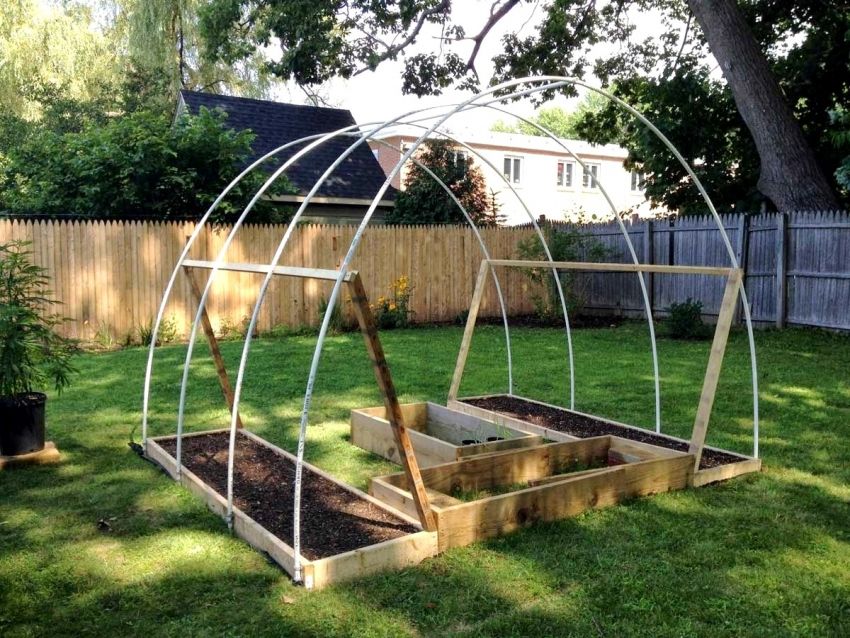
Another criterion that must be included in the process of choosing a site for the installation of a structure is the degree of soil looseness. If the soil is loose, it can lead to a partial subsidence of the frame, a violation of its integrity, and over time the greenhouse may collapse.
Owners rarely think through a convenient approach to the greenhouse at the planning and design stage of the structure. This is a very important point that will further help you save energy on caring for plants and the structure itself. It is best of all if a wide and spacious walkway leads to the greenhouse, on which it is convenient to drive a cart with fertilizers or seedlings. In addition, it is desirable that the shed with the necessary tools to work was located not too far.
Helpful advice! Some trees can influence the development of plants in the greenhouse. For example, linden promotes reproduction of harmful microorganisms, such as mold fungi. Therefore, do not have a greenhouse next to it.
As for the appearance of greenhouses installed on the site, there are practically no restrictions. As a rule, owners who pay due attention to the design of their site, try to choose the most aesthetic option.
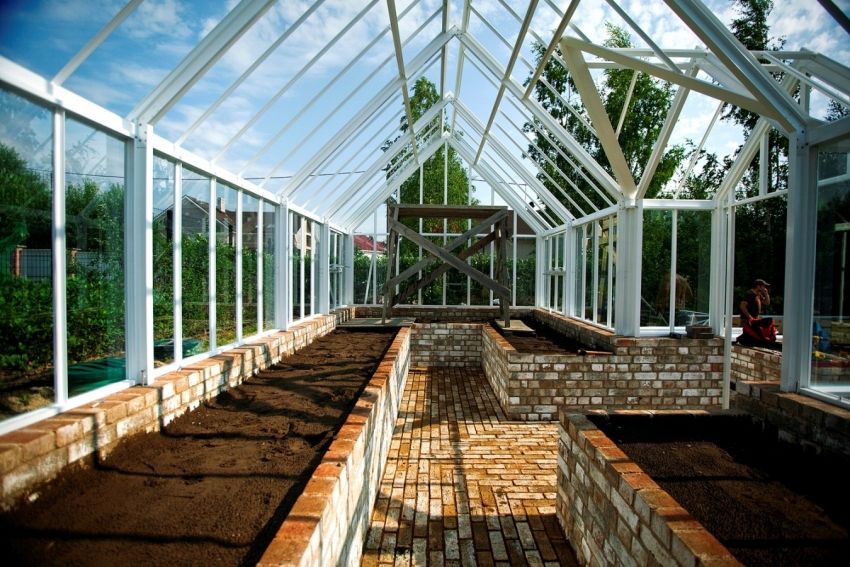
In addition, to give the site a neat appearance will help the symmetrical arrangement of all buildings, fences and paths. But the most important thing is that at the same time, the greenhouse should be positioned correctly and not close the windows of the house, not block the passage, etc.
Wood is one of the most affordable and popular materials used for various construction. Of course, it is impossible to deny the fact that it is wood that is most affected by external factors, however, this does not stop many country owners who want to build a greenhouse with their own hands.
In order to extend the life of the building, it is recommended to use wood from hardwood, and also to use various antiseptics and means of protection against parasites, mold and rot.

Soft woods are permissible for the construction of temporary structures. In this case, suitable pine, alder, spruce, aspen or linden. For more reliable and permanent designs, it is better to use other deciduous trees or cypress marsh, larch.
In the process of building a greenhouse, the frame of which is made of wood, it is very important to prepare a solid foundation that will become a solid foundation for the structure.
Depending on the design features, it is possible to make one or another variant of the foundation that will be suitable for this type of construction:
- foundation of railway sleepers or lumber. To do this, prepare a trench in which the sleepers or cant are laid. All these elements are connected with metal brackets. Then, on top is installed the finished frame of the greenhouse;
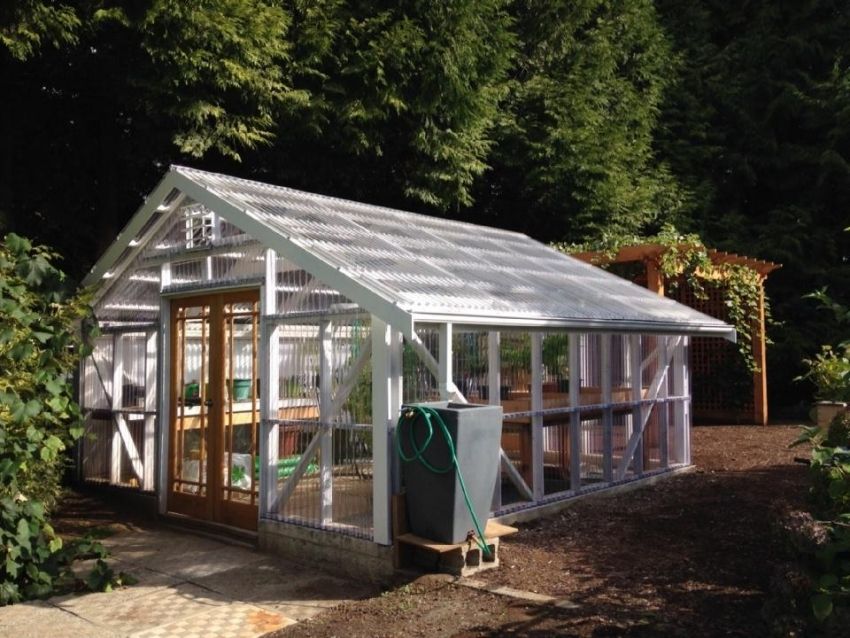
- for places where it is often windy, it is preferable to mount the column base. Due to the presence of a concrete base, such a structure can withstand severe wind loads, and even hurricanes. For this purpose, pipes with a diameter of more than 20 cm will be required. They are driven in to a depth of 90 to 120 cm so that they do not freeze during the cold season;
- block foundation – another solution to the question of installing the base for a greenhouse or greenhouse. In this case, sand and gravel are poured into the previously prepared trench, and then concrete blocks are placed. All this is poured with cement mortar and then a frame of bars is fastened on top;
- strip foundation is practically not used for greenhouses, as it is designed for more serious loads. A concrete cushion 30-50 cm thick is located in a not too deep trench. The main advantage of this option is an extremely long service life, which makes it possible to change the structures by installing them on the same basis.
Having understood what is the difference between a greenhouse and a greenhouse, and having established the type of foundation suitable for you, you can proceed directly to the construction of the frame itself. As mentioned earlier, there are several options that you can implement yourself, for example, arched or gable construction. It all depends on your preferences, as well as features of the area on which the installation will be carried out.

Most often at the dachas can be found rectangular greenhouses or greenhouses with a gable roof. It is rather simple to make wooden greenhouses with your own hands, and their use will be quite comfortable if you think through all the nuances.
Usually, a greenhouse film is used as a covering material. Buy it can be quite inexpensive, however, most likely it will have to be changed every season. But if you figure out how to fix the film on the greenhouse correctly, the process of its replacement will occur very quickly and without any difficulty. As a stronger alternative, you can consider a coating of polycarbonate sheets.
Helpful advice! The price per meter of film for a greenhouse can start from 2 rubles and increase depending on the quality and strength of the material. In order to cover served more than one season, without requiring repair and additional costs, it is better to choose the best quality polyethylene.
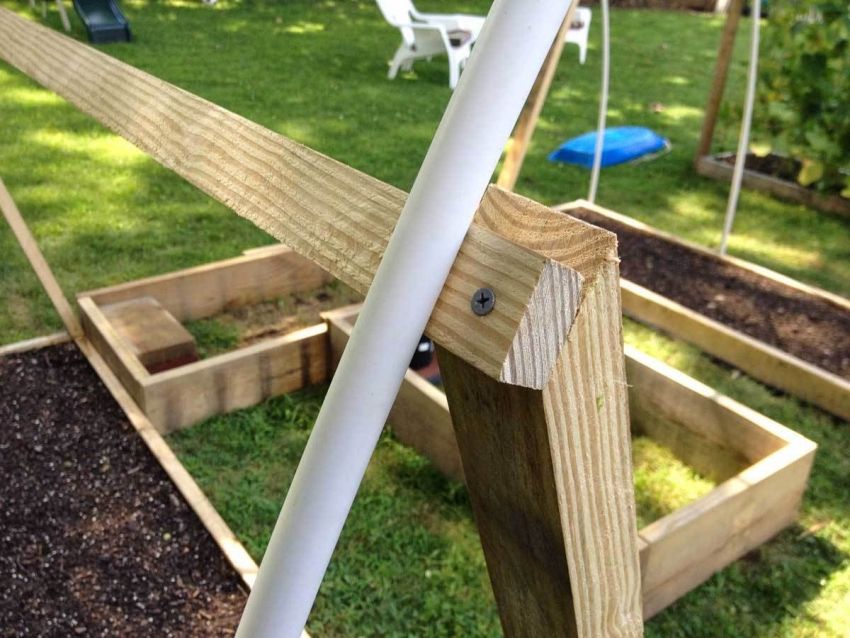
It is easiest to start the assembly of the frame with the assembly of individual sections of the greenhouse on the ground, which will be located parallel to the front and rear walls of the structure.
Helpful advice! The number of sections directly determines the length of the structure, as well as its strength and stability. If there are more elements, the construction will become more reliable, and the coating will sag less.
As an example, we will look at how to build a standard greenhouse out of wood with your own hands, photos of which can often be found on forums and specialized sites. Such a building with a gable roof is suitable for planting tomato seedlings in a greenhouse, and for growing other crops. A door will be located on one of the end parts of the structure in order to provide access to the plants and allow them to look after them most comfortably.

After reviewing the video, a greenhouse with your hands will no longer seem an impossible task to you. Following simple recommendations, you can easily make your own greenhouse from a covering material that will meet all needs, and is perfect for the effective cultivation of vegetable crops.

